Preliminary Research
At the start of this project I was drawn to the idea of exploring the watery bodies within watery bodies. I was inspired by the notion in Hydrofeminism of treating different bodies as partners, especially those that are usually neglected or treated in a dismissive manner.
Early on in our ontological experimentation, I embodied water as a medium of growth. Water as a source for life in the macro scale is an immediate connection- without fresh water not only would we not be able to survive dehydration, but life as we know it would not exist in the same way. However, I was more interested in exploring water as a source of life in the micro scale. Instead of just a tool that we utilize in our survival, microbes see water as life itself. It is the world in which they grow, thrive, and die. Instead of applying human notions to water and personifying it, I decided to approach water as a microbe instead. That way, I believe I can treat it as a partner in life instead of a tool in a more effective manner.
By placing the spotlight in microbes that live in water, I am also able to give them (as often neglected watery bodies) the attention. I want to explore their way of life and treat them as my research partners as well.
I began my research with the Life in Jars? channel, where a dutch youtuber explores the microscopic life in the bodies of water around the Netherlands. His videos showcase the unseen creatures in the watery landscapes, and he creates ecosystems and terrariums for them to grow in an untampered manner.
I am interested in the way that he explores and identifies the different microscopic creatures, giving them the same treatment that is given to larger creatures kept in aquariums such as fish or shrimp.
Tal Danino
Peta Clancy
Sonja Baumel
Material Research
Concept
Idea(s)
Create a space for the water and its watery bodies within human systems
1.installation for immersion into the world of microorganisms
2.products inspired by the watery creatures
Idea 1: Installation
The first idea that I explored was creating an immersive environment using projections that placed the viewer in the place of the microbes and water bugs. This would allow us to literally put ourselves in their shoes, and see the world through their eyes. The exhibition would blow up the size of the microbes and create an underwater sensation in order to be as immersive as possible.
I wanted to do some exploring with projection effects using light and color, together with water. In this way, I could simulate the underwater environment that the microbes I observed lived in. I added a mixture of dyes, oil, and paint to different receptacles of water in order to observe the effect that projecting it onto a wall would result in.
There were some interesting results, I thought it was strangely peaceful to create these projections, and they made me feel small and encompassed. This was the effect that I was trying to achieve. Therefore, I had a direction to begin working on projections.
However...
As I continued to do research and reflect on the idea of a projection-based interactive environment, I started to feel like this project was becoming disingenuous. This is not the type of art that I would like to be making, and I felt like I was starting to create the project that I thought was expected of me, rather than the project that I wanted to create.
I returned instead to the other two ideas that I had at the start: an interactive website or a line of products inspired by the water and the creatures in it.
I was very inspired by the unobserved world within the water that I found. The microscopic quality of the animals make it difficult to observe the details that are present in their structure without aid, and this mirrors the difficulty that we tend to have with appreciating the action of creatures smaller than ourselves.
I wanted to highlight the presence and importance of these creatures that often go ignored by translating them into a format that we, as humans, have an easier time comprehending and appreciating.
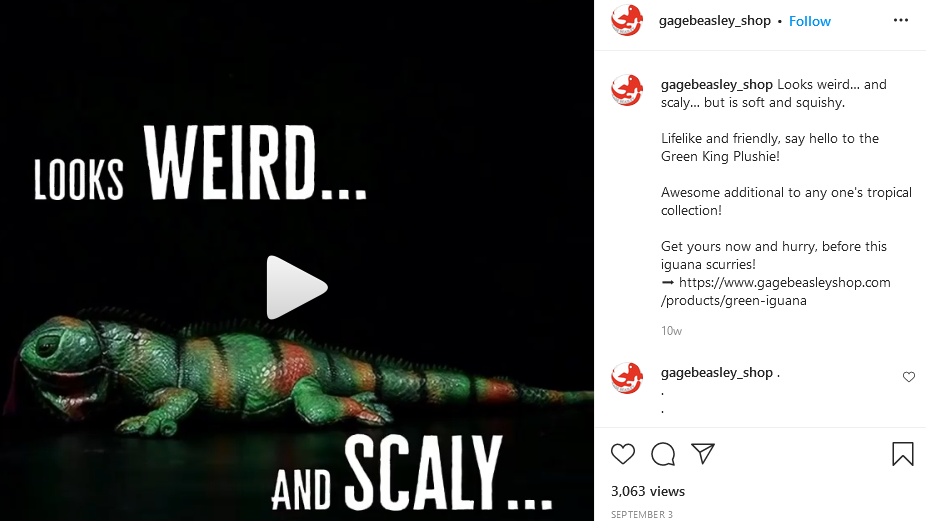

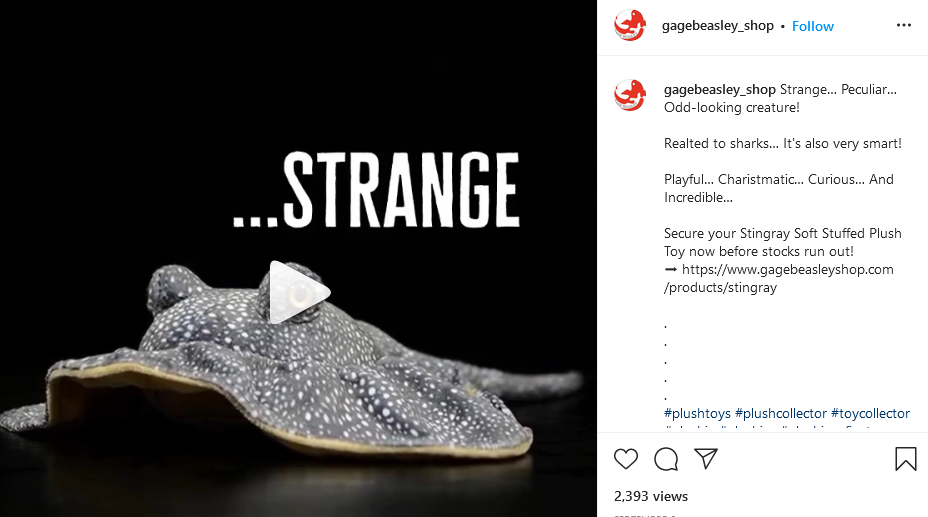
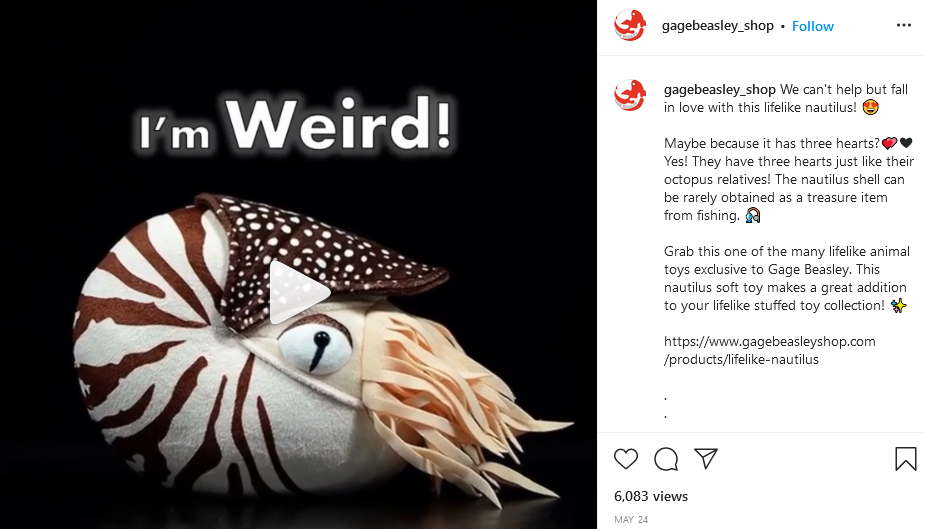
I started getting ads on Instagram for this store that sold plushies of sea creatures, which specifically capitalized on the "weird" factor.
This reminded of the Ruben Jacob’s Everyone is an Artist, which posed that authenticity is becoming a product more than an individual’s characteristic. This commodification of individuality began due to post-Fordist production optimization, and may have led to the creation of hyper-specific plushies.
I thought that it would be interesting to take this concept of commodification of individuality and use it for a purpose that benefits water.
In class, a lot of our exercises centered around, for example, anthropomorphizing water by trying to embody different bodies of water. However, this seemed contradictory to me. I feel like it's impossible to humanize water and apply human values to it. That is not the direction that I want to take in working with water as a design partner. It seems derivative and circular.
Instead, I think that a more efficient manner in working with water as a design partner is to work within human society, but in a manner that does not discount the importance of water. For example- granting personable rights to the Whanganui River is a way of working within human systems while also benefiting water, without getting caught up in trying to impose human sentiment to it.
I want to create a line of products that work within the system of capitalism, by taking advantage of the commodification of individuality, but that can serve to benefit water in the end. Therefore, my idea is:
Idea 2: Waterbug Merch
By creating merchandise that places the microscopic water creatures in the public eye, we can draw attention to their importance and work off the hype of having weird, unique products. My idea is to set up an online shop with products themed after these creatures, and donate the proceeds to the Plastic Whale foundation. They aim to clean the waters of the Dutch canals, as well as to spread their influence to other areas in the world. They organize "plastic fishing" events, and create furniture out of the materials retrieved from the canals. The proceeds from the store and then used to further the goals of the company.
This project will serve as a proof of concept idea, where we could take the idea of plastic fishing to create articles of clothing made from the recycled plastic, and in a way that prioritizes reducing water waste.
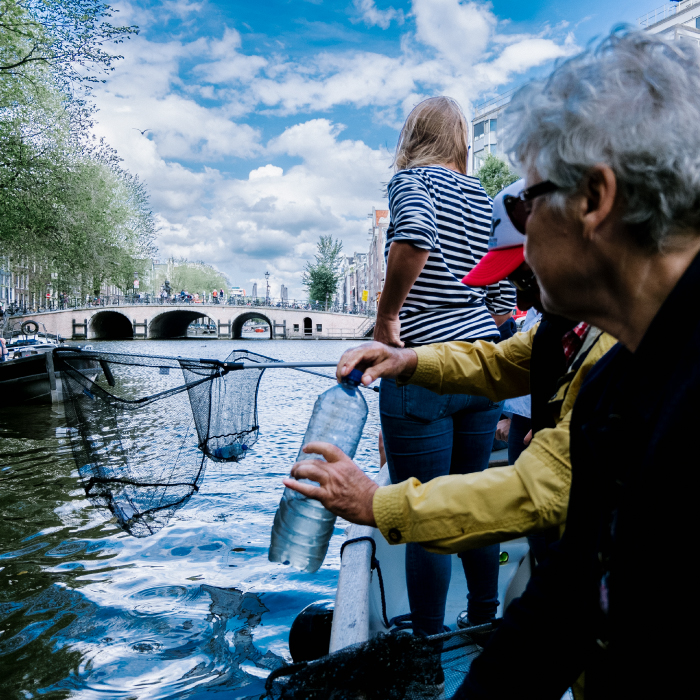

One problem that using any sort of plastic-based synthetic fabric can create is the release of microfibres, which can be ingested for harmful effects both by humans and ocean creatures. I did find a criteria to minimize the impact of synthetic garments, which would be ideal for this sort of product. This includes:
1. Using textiles which have been tested to ensure minimal release of synthetic microfibres into the environment (can be treated during production).
2. Ensuring the product is durable so it remains out of landfill as long as possible
3.Consider how the garment and textile waste could be recycled, to achieve a circular system.
Another method of decreasing microfibre release is by handwashing garments, since most of the release occurs during long wash cycles in the washing machine. This, combined with the fact that the products are meant to encourage being more conscious about water, led me to the idea of creating swimwear. Recycled plastic can be used for creating the swimsuit, and it is an article of clothing that is not worn too often, so wouldn't be washed too often, and you are actually encouraged to handwash.
Pattern Design
Role
The role of water in this project as my collaborator is that of a business partner or creative director.
My role is it's translator.
The "Daphnia in Bloom" Suit
This is the final design that I ended up with for the Daphnia-inspired bathing suit. It also contains blooms of algea to add another visual element to the pattern.
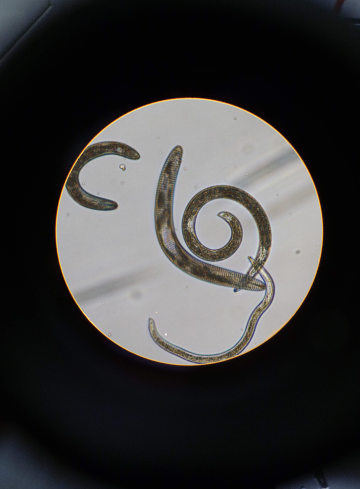
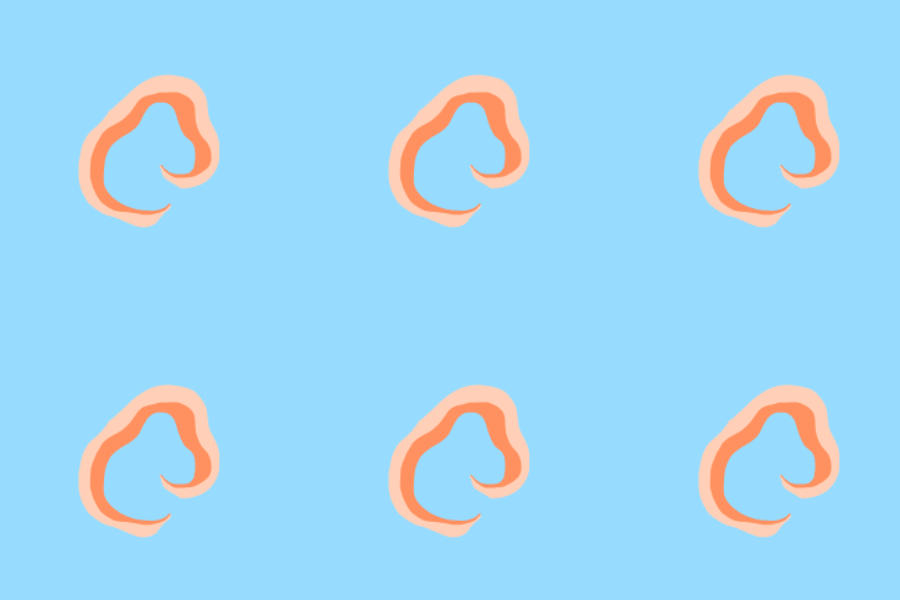
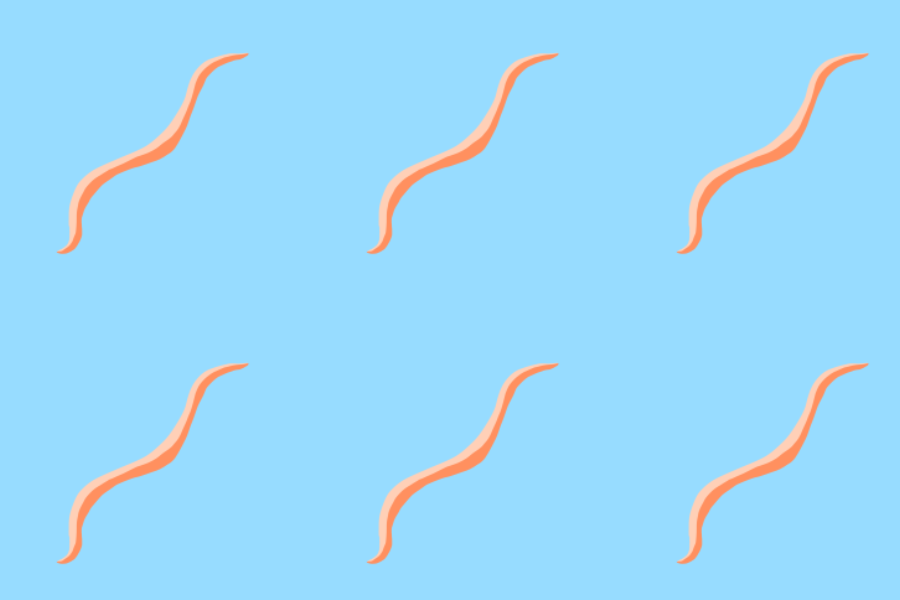
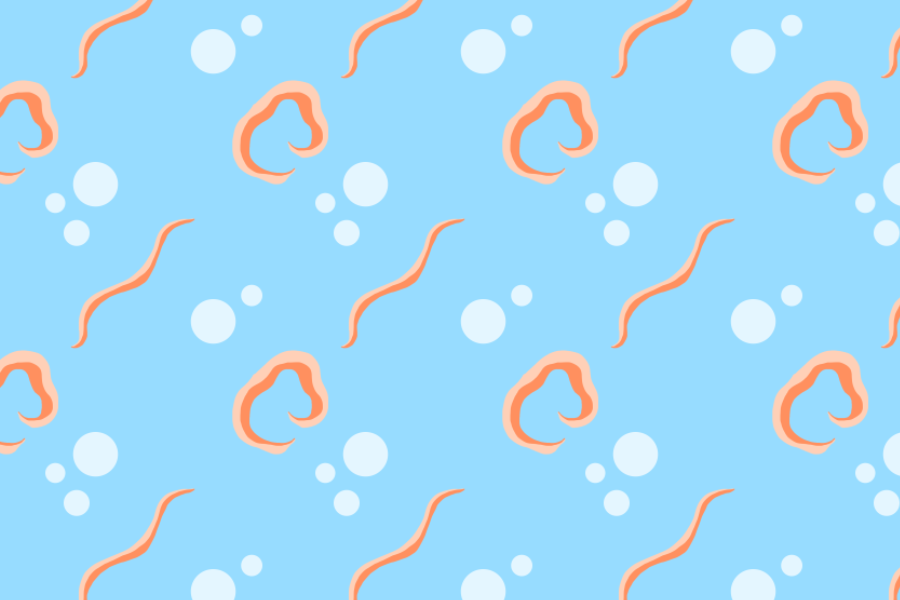
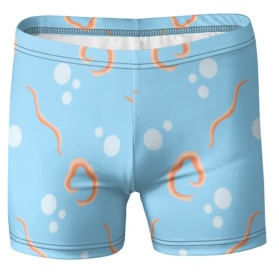
In order to push the idea of working within a capitalist system, I decided to make an ad campaign featuring the swimswuit designs. I want to deconstruct the common tropes and features of fast fashion brands like H&M and Zara and emulate them to create a parody through hyperbole.
This led me to the idea of "demarketing", which serves to reduce the demand of a product, especially in situations of overdemand and consumption. This can lead to more conscientious consumer behavior. Thus, by promoting this swimwear through demarketing I can create a sense of scarcity that allows for less products being made, thus decreasing the strain on the environment and promoting less fast consumption.
A lot of practices outlined in demarketing strategies have been co-opted by hype brands to increase consumption, such as limiting stock and increasing cost to create artificial scarcity. That connects directly into the idea of commodification of individuality.
By playing up the uniqueness and inaccessibility of the product, and by extent, the creature that it symbolizes, I will paradoxically be creating a push for lower consumption but an intrigue into the product that allows for a higher price point. This manipulation of the system emblematic of late stage capitalism allows me to translate the creatures in the water into our human system, and to then profit from it. I will be giving them a voice as agents of capitalism, to explore what it would be like to work with water as a business partner.
Nematode Trunks
Advertisement and De-marketing
Photoshoot Concept - Demarketing in Practice
This was a secondary concept for a pair of trunks based off of Nematodes. However, I wasn't feeling as inspired by those, and decided to focus on next steps for the original Daphnia swimwear.
There are different types of demarketing, which include General, Selective, and Ostensible. General demarketing involves decreasing demand globally for a product, such as government sponsored campaigns against cigarettes. Selective and Ostensible demarketing both play with the concept of attainability and maintaining exclusivity. Selective demarketing involves targetting a specific audience with demarketing strategies to maintain a core consumer base, and Ostensible demarketing involves artificially creating scarcity in order to excite customer interest. I will be employing Ostensible demarketing in my ad campaign. This will be done by breaking down stylistic choices in advertisements from hype brands that employ ostensible demarketing and simulating them with my own product.
I started off by analyzing advertisements from hype brands such as Supreme, CDG, and Nike in order to pick out common traits that I could implement into my own advertisements. Some key traits that I identified were: high impact fonts (mostly sans serif and bolded), large emphasis on the brand name and product, tending towards bold colors and high contrast between the product and the background, and captions that emphasize the value and importance of the product and brand. Another interesting characteristic that I identified was a reluctance to provide "helpful" information, such as the price, location of purchase, or even what the product being advertised was. This mirrors the strategies of demarketing that I found during my research.
From these traits, I began to sketch out thumbnail ideas for posters that I could create using the swimsuit. I went on two different directions with slogan: one that borders on threatening and emphasizes an urgency for consumption, and one that highlights values of the brand. The latter were derived from characteristics of water that we established during early ontological research.
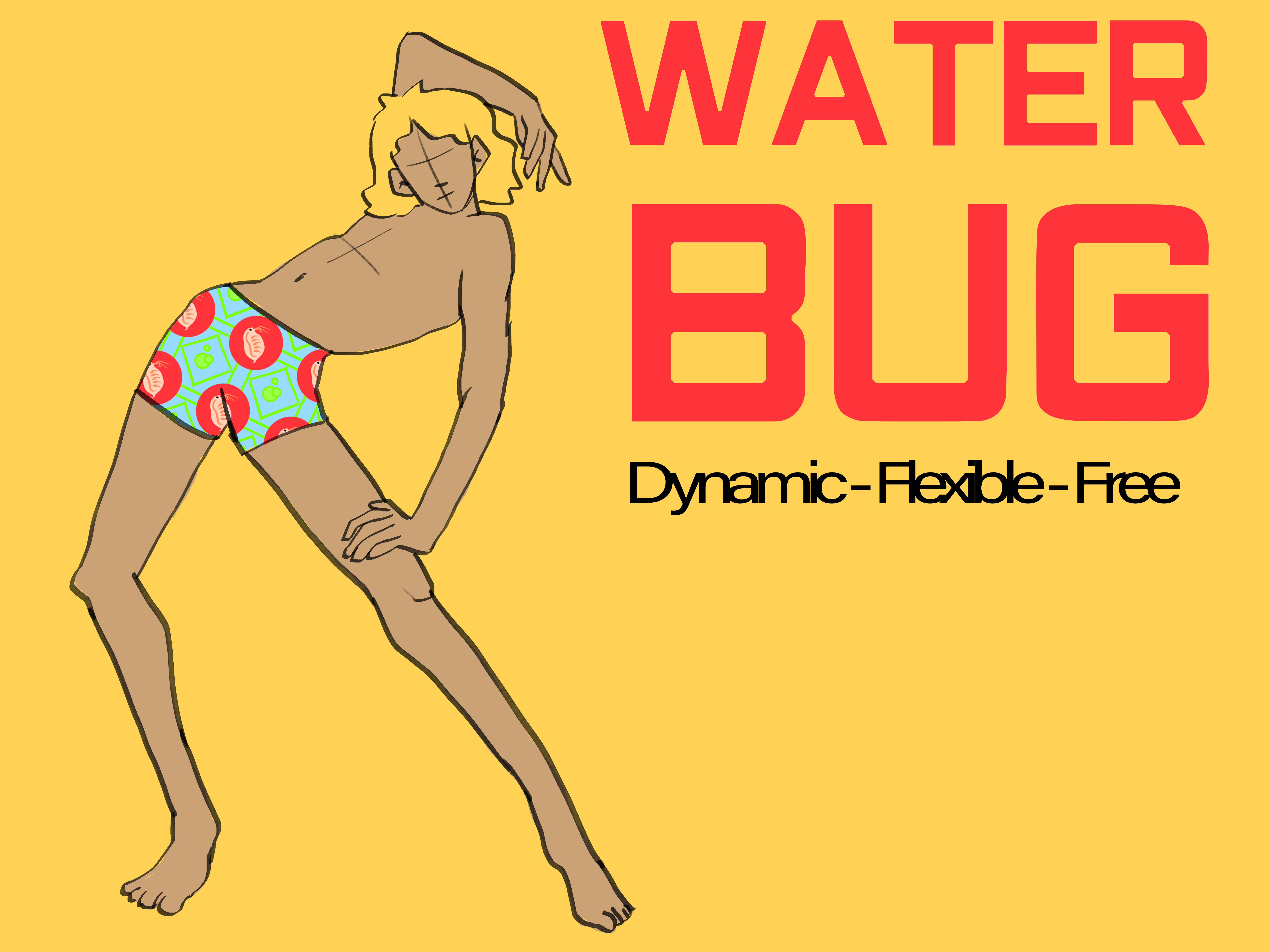


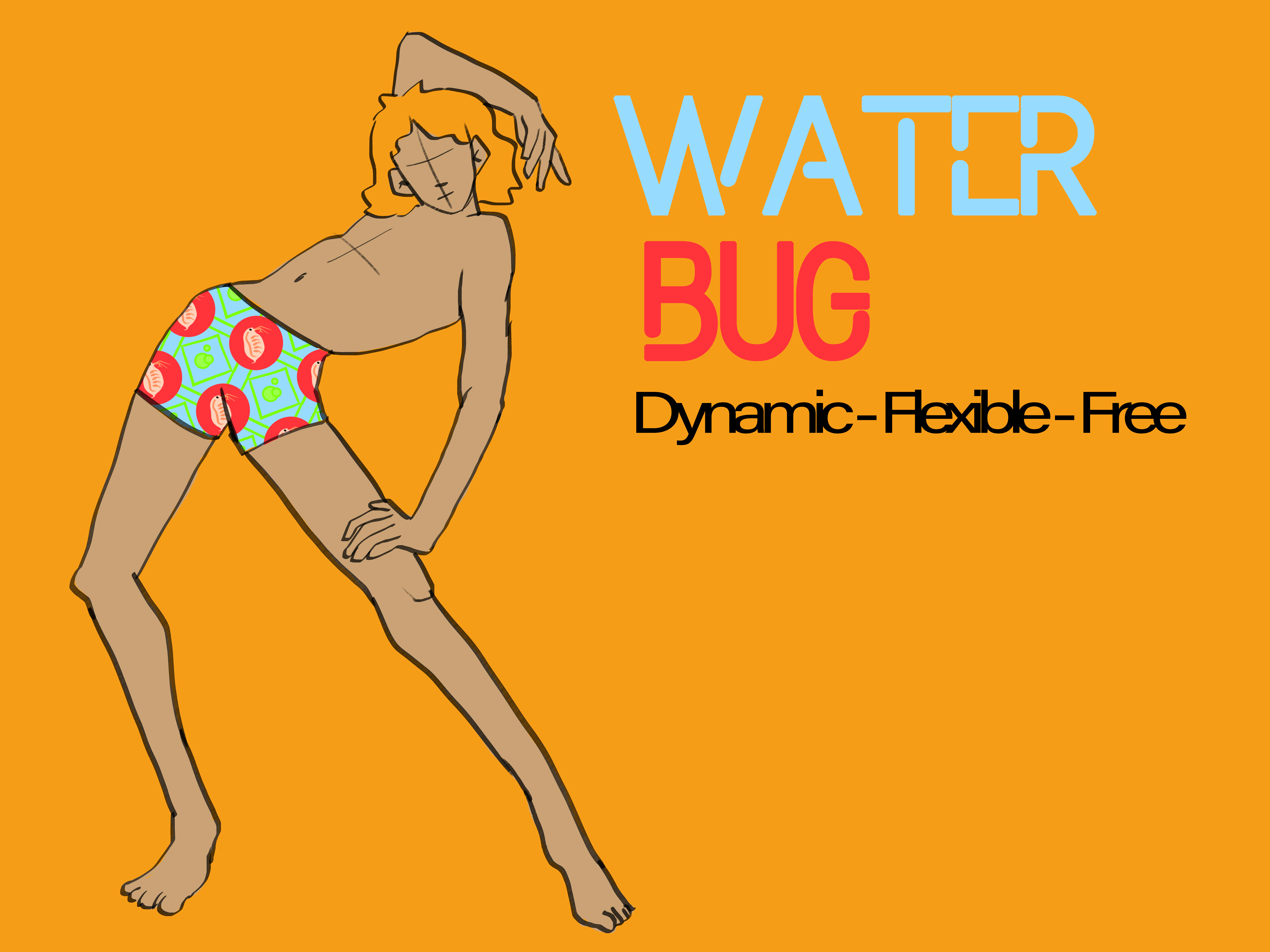

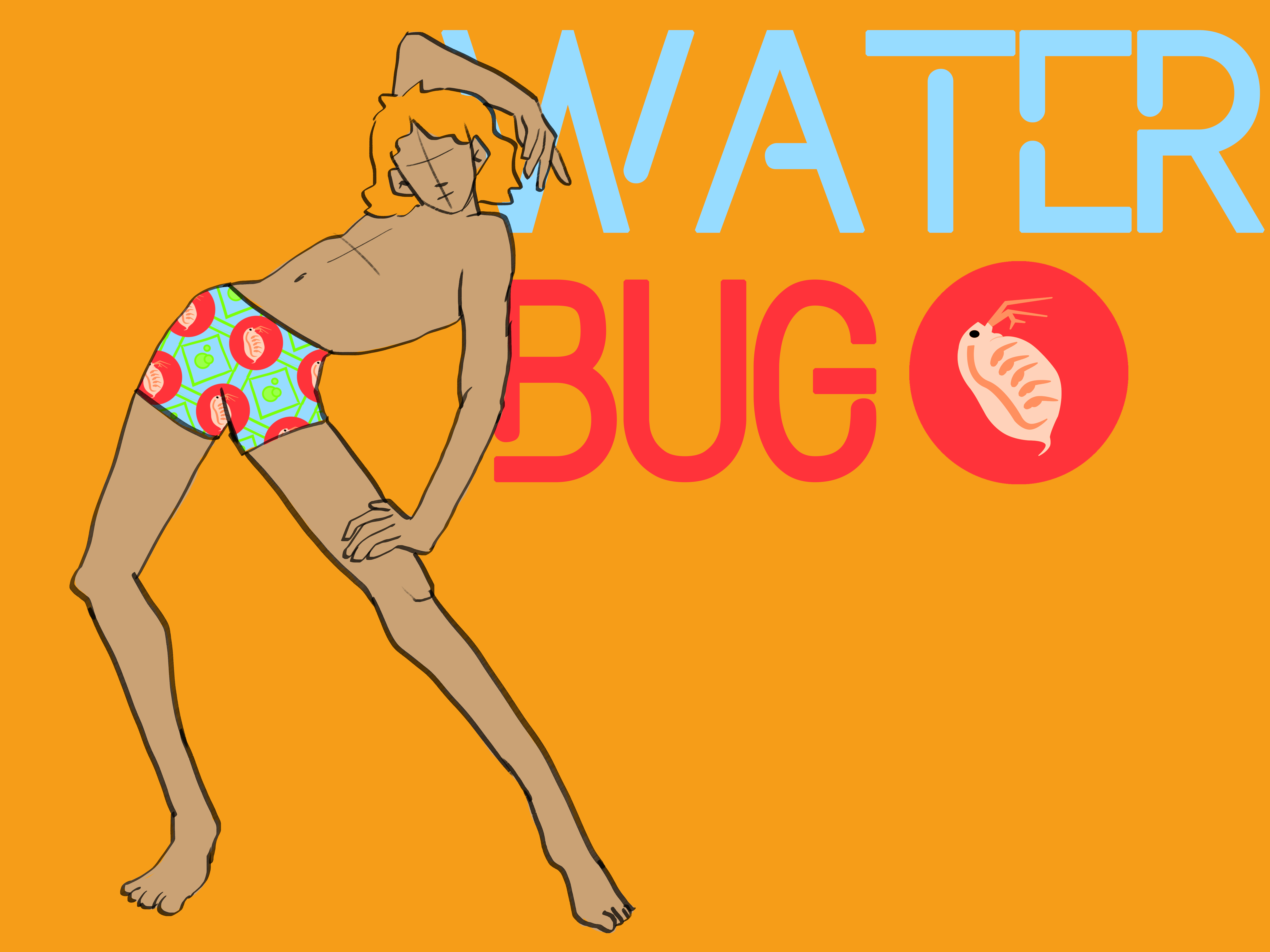
Final Result - Water in Consumerism
I was able to order a prototype of the swimwear from a company that prints custom swim trunks in the Netherlands. This, of course, is not a product made within the business model that I proposed, but only serves for visualization purposes. I then completed the photoshoot and edited the pictures to reflect the branding techniques that I identified in my research into hypebrands that co-opt demarketing for their advertisement. Namely, I mimicked the overexposed photography of the models, the high impact font placing emphasis on the product/brand name, and the slogans advertising their product values.
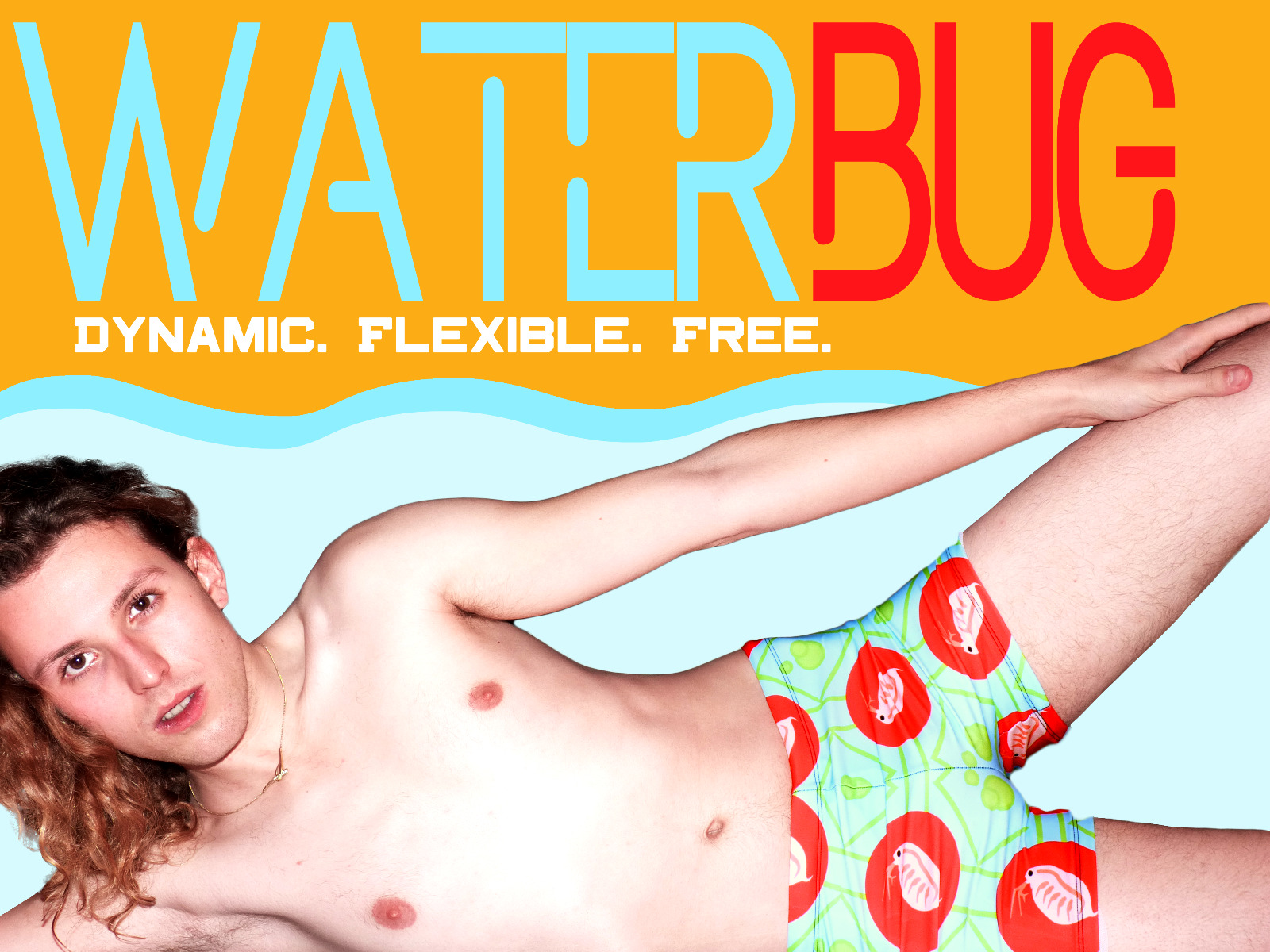
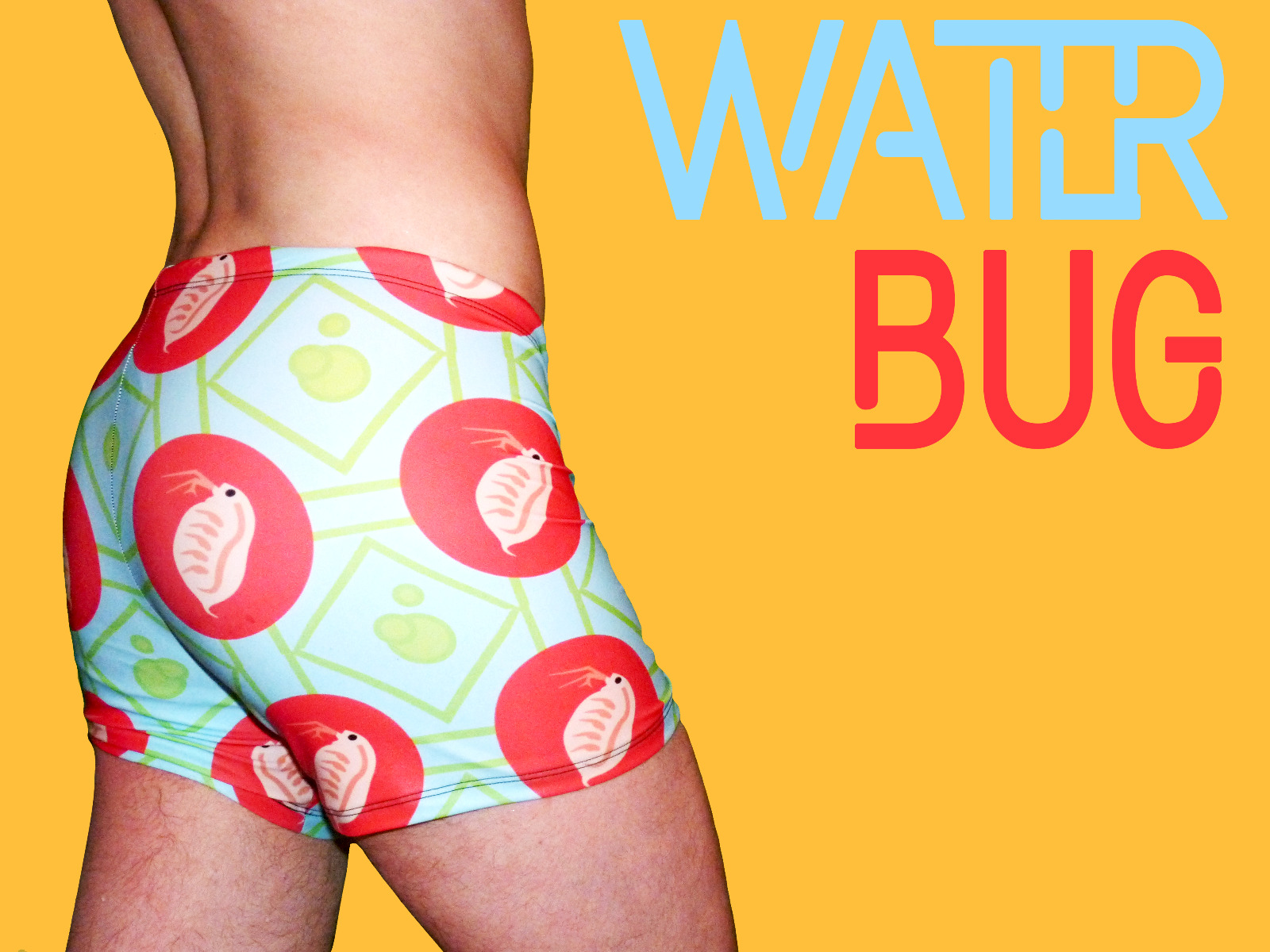
These are the final products that I came up with in order to create a proof of concept of my idea-
A pair of swimtrunks that serve two purposes:
1. Placing emphasis and taking inspiration on the Daphnia, an often under-regarded watery body that goes unperceived by the naked eye.
2. Working with water as a business partner to create a product that would benefit it while still operating under the human modus operandus of consumerist culture.
Conclusion and Next Steps
In this project, I focused mostly on the theoretical approach. This allowed me to explore research and frameworks, which is something that interests me in creating art. I was able to channel that into a product, but in terms of next steps I can focus more on the artifact itself. I received pieces of critique to do with pushing the print on the trunks, either by changing it to be more flattering, or embracing the Daphnia/microscope image aesthetic. Those could be interesting venues of exploration to take in the future.
I would also be interested in exploring the actualization of my proposed business model- figuring out a way of partnering with Plastic Whale in order to create the recycled plastic trunks, the profit of which could then be used to benefit water and the creatures living in it.
Overall, I was able to explore new avenues of theory as well as creating a product I had never done before, and I was able to incorporate my passion for translating scientific topics to a more widespread audience. Therefore, I am quite content with the conclusion of this project, and happy that it leads into possible routes for continuation and exploration.
Business Model
Therefore, my business model is as follows: by partening with Plastic Whale, we can produce swimtrunks made out of recyled plastic found in the Rotterdam canals, and make swimwear out of it. Swimwear can also be made of neoprene, which is nonwoven, so it is easier to create out of found fabric. The ease of creating recycled fabrics out of plastic, as well as their ability to be handwashed to reduce microfibre release led me to the idea of making swimtrunks. These trunks can be sold for a profit that can then go back into the Plastic Whale foundation, which works to keep bodies of water clean, thus benefiting water as well as the watery bodies that live within it. I can increase interest and profit by utilizing demarketing techniques, and thus work with water as a business partner to translate it's interests into our human system of capitalism and consumerism.